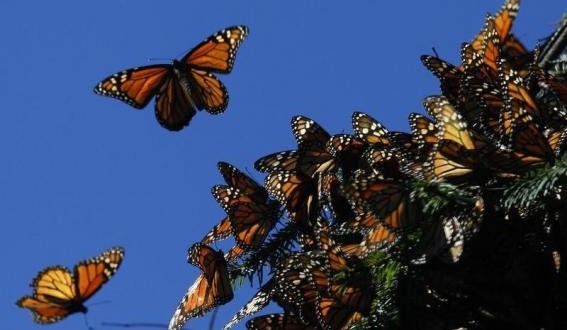New research, published in Nature, theorizes that just one single gene is responsible for some Monarch butterfly populations becoming migratory, while others choose to stay put. It is also thought that the species did not originate in Central or South America, but in North America, specifically the American Southwest or Northern Mexico areas, around 2 million years ago.
By comparing the genetic information of North American monarchs with non-migratory monarchs from other regions (as well as some other closely related butterfly species), the researchers identified more than 500 genes that had some sway in the insects’ ability to migrate. But one gene — one that makes monarchs into long-distance fliers instead of sprinters — seemed to show the sharpest difference between butterflies that migrated and those that stayed put.
“Migration is regarded as a complex behavior, but every time that the butterflies have lost migration, they change in exactly the same way, in this one gene involved in flight muscle efficiency,” senior study author and University of Chicago Prof. Marcus Kronforst said in a statement. “In populations that have lost migration, efficiency goes down, suggesting there is a benefit to flying fast and hard when they don’t need to migrate.”
Based on the changes they saw in this gene and others in non-migratory populations, the researchers believe that all monarchs were once migratory, and originated in Mexico or the southern United States. After dispersing to different regions — Central and South America, across the Atlantic and across the Pacific — the three populations all lost their ability to migrate long distances.
Monarch migration is on the decline, with only 35 million travelers estimated last year compared to about 1 billion in 1996. While the butterflies, who’ve lost a lot of their primary habitat (milkweed) to herbicide use, aren’t in danger of extinction, it’s troubling to see just how fragile their migratory habits might be.
“You used to see huge numbers of monarchs, clouds of them passing by,” said Kronforst. “Now it looks quite possible that in the not-too-distant future, this annual migration won’t happen.”
Agencies/Canadajournal
 Canada Journal – News of the World Articles and videos to bring you the biggest Canadian news stories from across the country every day
Canada Journal – News of the World Articles and videos to bring you the biggest Canadian news stories from across the country every day



